Partner Helen Rootham
Queer Places:
Woodend, The Crescent, Scarborough YO11 2PW, Regno Unito
25 Chesham Pl, Belgravia, London SW1X 8HG, Regno Unito
Pembridge Mansion, 18-92 Moscow Rd, London W2, Regno Unito
The Sesame Club, 49 Grosvenor St, Mayfair, London W1K 3HP, Regno Unito
Greenhill, Hampstead High St, London NW3, Regno Unito
Bryher House, 20 Keats Grove, Hampstead, London NW3 2RS, Regno Unito
St Mary and St Peter, Weedon Lois, Towcester NN12 8PP, Regno Unito
 Dame
Edith Louisa Sitwell DBE (7 September 1887 – 9 December 1964) was a British
poet and critic and the eldest of the three literary Sitwells. She was
extensively photographed by Cecil Beaton and
painted by Alvaro Guevara,
Nina Hammett,
Roger Fry,
Wyndham Lewis, and
Pavel Tchelitchew.
Shipping heiress Bryher, the writer born
Winifred Ellerman, the only woman in the general milieu of European lesbians
richer than Natalie Barney,
gave money to Djuna Barnes,
Sylvia Beach,
Edith Sitwell and
Dorothy Richardson, among others.
Dame
Edith Louisa Sitwell DBE (7 September 1887 – 9 December 1964) was a British
poet and critic and the eldest of the three literary Sitwells. She was
extensively photographed by Cecil Beaton and
painted by Alvaro Guevara,
Nina Hammett,
Roger Fry,
Wyndham Lewis, and
Pavel Tchelitchew.
Shipping heiress Bryher, the writer born
Winifred Ellerman, the only woman in the general milieu of European lesbians
richer than Natalie Barney,
gave money to Djuna Barnes,
Sylvia Beach,
Edith Sitwell and
Dorothy Richardson, among others.
Like her brothers
Osbert and
Sacheverell,
Edith reacted badly to her eccentric, unloving parents, and lived for much of
her life with her governess. She never married, but became passionately
attached to the gay Russian painter
Pavel Tchelitchew,
and her home was always open to London's poetic circle, to whom she was
unfailingly generous and helpful.
Sitwell published poetry continuously from 1913, some of it abstract and
set to music. With her dramatic style and exotic costumes, she was sometimes
labelled a poseur, but her work was praised for its solid technique and
painstaking craftsmanship.
Edith Louisa Sitwell was born in Scarborough, North Riding of Yorkshire,
the oldest child and only daughter of Sir George Sitwell, 4th Baronet, of
Renishaw Hall; he was an expert on genealogy and landscaping.[1]
Her mother was Lady Ida Emily Augusta (née Denison), a daughter of the Earl of
Londesborough and a granddaughter of Henry Somerset, 7th Duke of Beaufort. She
claimed a descent through female lines from the Plantagenets.
Sitwell had two younger brothers, Osbert (1892–1969) and Sacheverell
Sitwell (1897–1988) both distinguished authors, well-known literary figures in
their own right, and long-term collaborators. Her relationship with her
parents was stormy at best, not least because her father made her undertake a
"cure" for her supposed spinal deformation, involving locking her into an iron
frame. She wrote in her autobiography that her parents had always been
strangers to her.
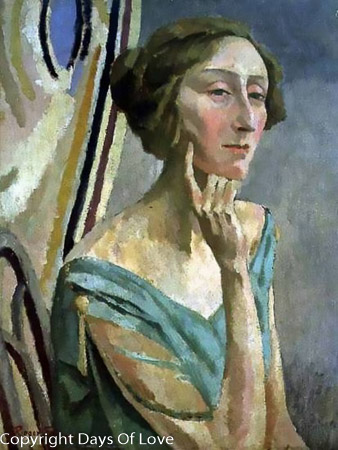
by Roger Fry
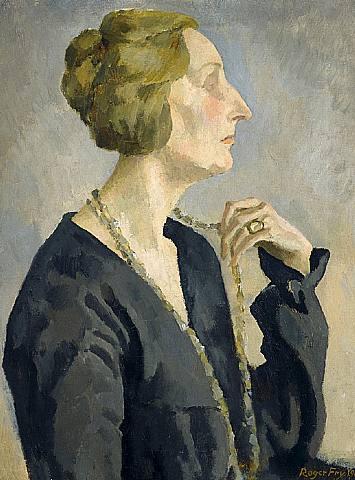
by Roger Fry

by Rollie McKenna

by Cecil Beaton

by Álvaro Guevara, 1916

by Wyndham Lewis
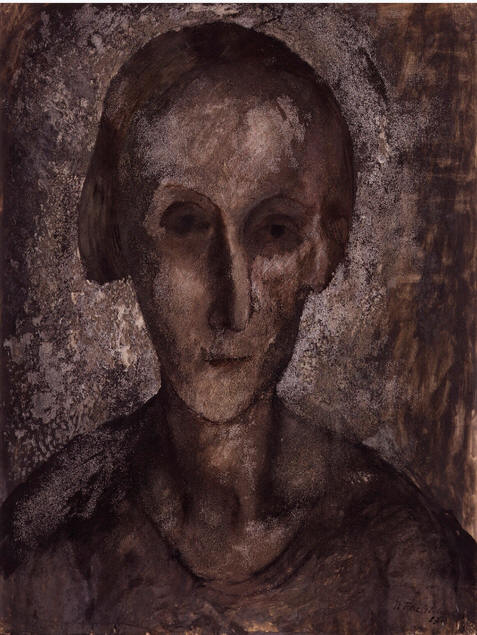
by Pavel Tchelitchew

by Pavel Tchelitchew
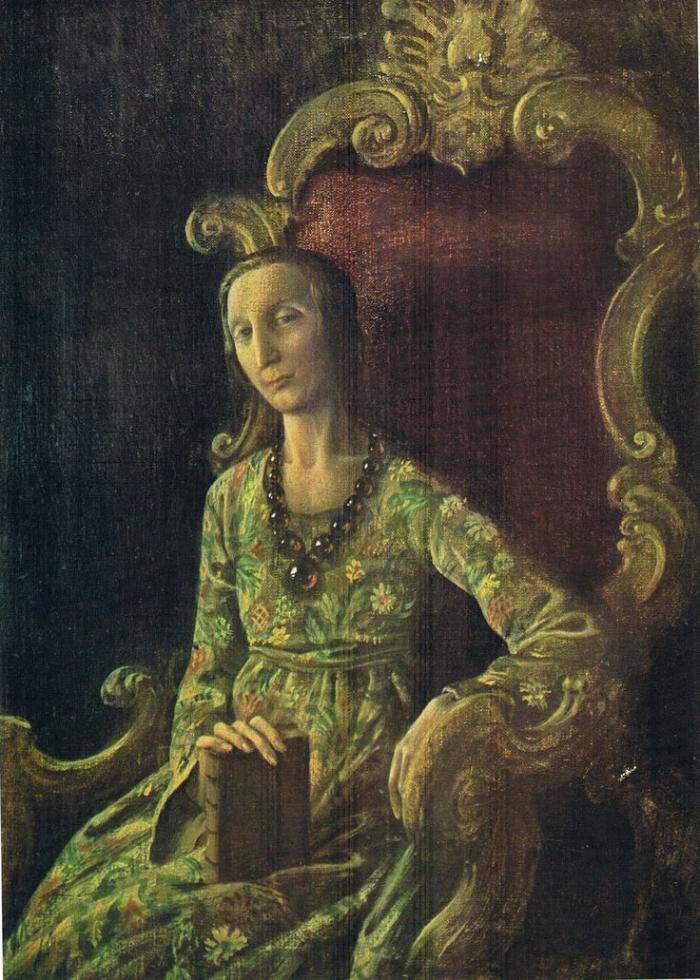
by Rex Whistler

by George
Platt Lynes
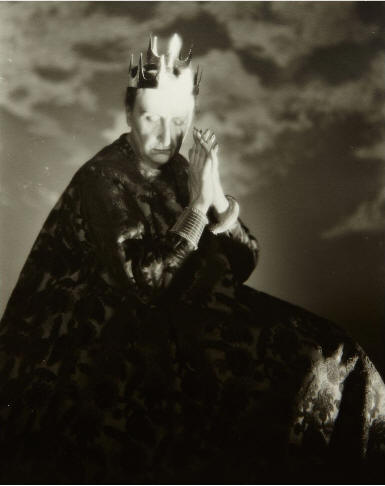
by George
Platt Lynes
In 1914, 26-year-old Sitwell moved to a small, shabby flat in Pembridge
Mansions, Bayswater, which she shared with
Helen Rootham (1875–1938), her governess since 1903.
Alvaro Guevara was the first acknowledged
love of Edith Sitwell's life; he became famous after his 1916 portrait of
Sitwell was bought by the Tate Gallery.
Sitwell never married, but in 1927 she allegedly fell in love with the gay
Russian painter Pavel Tchelitchew. The relationship lasted until 1928, the
same year that Rootham underwent operations for cancer (eventually becoming an
invalid). In 1932, Helen Rootham and Sitwell moved to Paris, where they lived
with Rootham's younger sister, Evelyn Wiel.
Sitwell's mother died in 1937. Sitwell did not attend the funeral because
of her displeasure with her parents during her childhood. Helen Rootham died
of spinal cancer in 1938. During the Second World War Sitwell returned from
France and retired to Renishaw with her brother Osbert and his lover, David
Horner. She wrote under the light of oil lamps as the house had no
electricity. She knitted clothes for their friends who served in the army. One
of the beneficiaries was
Alec Guinness, who received a pair of seaboot stockings.
The poems she wrote during the war brought her back before the public. They
include Street Songs (1942), The Song of the Cold (1945), and
The Shadow of Cain (1947), all of which were much praised. "Still Falls
the Rain" about the London Blitz, remains perhaps her best-known poem; it was
set to music by
Benjamin Britten as Canticle III: Still Falls the Rain. Her poem The
Bee-Keeper was set to music by Priaulx Rainier, as The Bee Oracles
(1970), a setting for tenor, flute, oboe, violin, cello, and harpsichord. It
was premiered by Peter Pears
in 1970. Poems from The Canticle of the Rose were set by composer
Joseph Phibbs in a song-cycle for high soprano with string quartet premiered
in 2005.[2]
In 1943, her father died in Switzerland, his wealth depleted. In 1948, a
reunion with Tchelitchew, whom she had not seen since before the war, went
badly. In 1948 Sitwell toured the United States with her brothers, reciting
her poetry and, notoriously, giving a reading of Lady Macbeth's sleepwalking
scene. Her poetry recitals always were occasions; she made recordings of her
poems, including two recordings of Façade, the first with
Constant Lambert
as co-narrator, and the second with Peter Pears.
Tchelitchew died in July 1957. Her brother Osbert died in 1969, of
Parkinson's disease, diagnosed in 1950. Sitwell became a Dame Commander (DBE)
in 1954. In August 1955 she converted to Roman Catholicism and asked author
Evelyn Waugh to serve
as her godfather.
Sitwell wrote two books about Queen
Elizabeth I of England: Fanfare for
Elizabeth (1946) and The Queens and the Hive (1962). She always
claimed that she wrote prose simply for money and both these books were
extremely successful, as were her English Eccentrics (1933) and
Victoria of England (1936).
Sitwell was the subject of This Is Your Life in November 1962 when
she was surprised by Eamonn Andrews on the stage of the BBC Television Theatre
in London.
Sitwell lived from 1961 until her death in a flat in Hampstead in London,
which is now marked with an English Heritage
blue
plaque.[3]
About 1957 she began using a wheelchair, after battling with Marfan
syndrome throughout her life. Her last poetry reading was in 1962. She died of
cerebral haemorrhage at St Thomas' Hospital on 9 December 1964 at the age of
77. She is buried in the churchyard of Weedon Lois in Northamptonshire.[4]
Sitwell's papers are held at the Harry Ransom Center at The University of
Texas at Austin.
My published books:


BACK TO HOME PAGE

- https://en.wikipedia.org/wiki/Edith_Sitwell
- At Home and Abroad in the Empire: British Women Write the 1930s
Robin Hackett, Freda Hauser, Gay Wachman
Associated University Presse, 2009
- Woods, Gregory. Homintern . Yale University Press. Edizione del
Kindle.
 Dame
Edith Louisa Sitwell DBE (7 September 1887 – 9 December 1964) was a British
poet and critic and the eldest of the three literary Sitwells. She was
extensively photographed by Cecil Beaton and
painted by Alvaro Guevara,
Nina Hammett,
Roger Fry,
Wyndham Lewis, and
Pavel Tchelitchew.
Shipping heiress Bryher, the writer born
Winifred Ellerman, the only woman in the general milieu of European lesbians
richer than Natalie Barney,
gave money to Djuna Barnes,
Sylvia Beach,
Edith Sitwell and
Dorothy Richardson, among others.
Dame
Edith Louisa Sitwell DBE (7 September 1887 – 9 December 1964) was a British
poet and critic and the eldest of the three literary Sitwells. She was
extensively photographed by Cecil Beaton and
painted by Alvaro Guevara,
Nina Hammett,
Roger Fry,
Wyndham Lewis, and
Pavel Tchelitchew.
Shipping heiress Bryher, the writer born
Winifred Ellerman, the only woman in the general milieu of European lesbians
richer than Natalie Barney,
gave money to Djuna Barnes,
Sylvia Beach,
Edith Sitwell and
Dorothy Richardson, among others.











